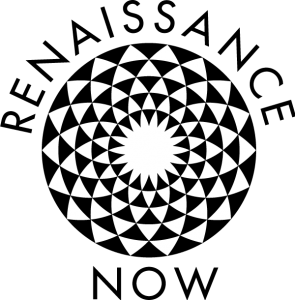By Ian Koebner*
On January 19th, 2022 you could get your nails done at the Van Gogh Museum in Amsterdam, or, if you preferred, receive a haircut at the world famous Concertgebouw while listening to the resident orchestra play American composer Charles Ives’ Symphony Number 2. In fact, across the Netherlands many celebrated cultural venues opened their doors in a playful act of civil disobedience intended to draw attention to the cultural sector’s dire situation and to ask The Hague for a more balanced corona policy.
Diederik Ebbinge and Sanne Wallis de Vries orchestrated the national demonstration, which they called Kapsalon Theater, to coincide with Dutch Prime Minister Mark Rutte’s January 14th announcement that the Netherlands would be easing one of the strictest lockdowns in Europe. The new guidelines allowed some shops, including hairdressers and gyms to reopen, but kept the cultural sector – museums, performing arts venues, and theaters – closed.
The decision of when and what to shut down or reopen is the political, economic and scientific theater of determining essentiality – how important is an entity to the public’s health and wellbeing, compared to the risk that that entity imposes on the public simply by being open. At the tails of the bell curve the assessments come easy, like a black box production, or deciding where to place a painting in a white cube. Rhetorical question: should the hospital stay open? But under the curve, under the mountain of decisions faced by individuals and policy-makers where information is limited and changing, the view is hazy, the tone is gray, the art work is difficult, even surreal at times.
On January 14th the national stage in the Netherlands was set –around 86% of the adult population was fully vaccinated and approximately 46% had received a booster. The population was exhausted from 2 years of living with a deadly virus, but needed to confront a surge of new daily COVID-19 infections that surpassed 30,000, an all-time record since the beginning of the pandemic. Against this backdrop Dutch museums, up to a quarter of which may not survive the pandemic, did not make the essentiality cut, but nail salons and sex workers did. Gray. Not black. Not white.
In a national act of mischievous aesthetics Kapsalon Theater drew critical and playful attention to these policy theatrics, but also and importantly it evidenced the cultural sector’s ability to reimagine and repurpose itself, to be recognized, and assert relevancy. An awareness gap exists regarding the arts’ public health potential. Furthermore, a practice gap exists in creating the innovative programs and partnerships required to fully realize and evaluate that potential.

On March 11, 2022 an international group of artists, museum and health professionals, curators, and scholars will come together for a free online conference entitled, “The Analgesic Museum” to help seed such a partnership. The ½ day program centers on three areas of interest:
• Arts experiences and practices to reduce the burden of pain
- Exhibition development to showcase the aesthetics of analgesia
- Research and creative scholarship to explore how museum-based interventions can lessen pain
Philosophers of aesthetics have argued for centuries that the arts can draw the individual from isolation, create purpose and enliven existence, but can they also relieve pain? Please join the conversation and help us to find out. Whether museums continue to offer manicures is beside the point. What is important is the creative and rigorous interdisciplinary study of the cultural sector’s essentiality.
* Ian Koebner is the Director of Integrative Pain Management and an Assistant Professor in the Department of Anesthesiology and Pain Medicine at the University of California, Davis (UCD) as well as a past Cultural Agents Fellow at Harvard University and current CLUE+ Research Fellow at the Vrije University Amsterdam. Koebner is the principal investigator of a National Institutes of Health, National Center for Advancing Translational Sciences award for his project entitled, The Analgesic Museum: The Development and Effectiveness of Museum-Based Experiences to Reduce Social Isolation and Pain Among Individuals with Chronic Pain. Prior to his appointment at UCD he was the founding executive director of an international arts-based education and conflict resolution organization called Sacred Slam. During his tenure with Sacred Slam he curated over 50 exhibitions, workshops, and performances in conflict and post-conflict regions around the world designed to challenge stigma and promote diversity as a social asset.



